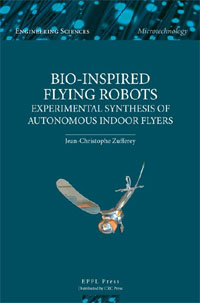|
Virtual Dictionary
Autonomous Knowledge Acquisition Autonomous knowledge acquisition is an AI term, referring to any cognitive AI system that seeks out input on its own volition, and without being explicitly programmed to. That AI must then act on the data gathered by its sensory systems, analysing and drawing its own conclusions ? expressly not ones pre-programmed into it. Below, we offer a selection of links from our resource databases which may match this term.
Related Dictionary
Entries for Autonomous Knowledge Acquisition:
Resources
in our database matching the Term Autonomous Knowledge Acquisition:

For all those claiming that autonomous robotics willnot be here for decades. In the 1950s, William Grey Walter built the very first, truly autonomous robots. 
We are still a long way from an autonomous robot surgeon in general surgery, but perhaps not as far removed as it was believed. Bioengineers at Duke University have developed a laboratory robot that can successfully locate tiny pieces of metal within flesh and guide a needle to its exact location, without any human assistance. 
 Researchers working at MIT have cracked one of the most difficult challenges in autonomous aircraft sensing and AI to crop up since self-piloting aircraft first came about. They have devised a method whereby fast-flying UAV planes can detect their environment and react swiftly enough to be able to fly indoors, dodging both static and moving obstacles as effortlessly as any human pilot could. Researchers working at MIT have cracked one of the most difficult challenges in autonomous aircraft sensing and AI to crop up since self-piloting aircraft first came about. They have devised a method whereby fast-flying UAV planes can detect their environment and react swiftly enough to be able to fly indoors, dodging both static and moving obstacles as effortlessly as any human pilot could.This article assumes some knowledge of matrices, the above article would be enough, and proceeds to show some better ways of utilising them for 3D use. This book demonstrates how bio-inspiration can lead to fully autonomous flying robots without relying on external aids. Most existing aerial robots fly in open skies, far from obstacles, and rely on external beacons ? mainly GPS ? to localise and navigate. However, these robots are not able to fly at low altitude or in confined environments, and yet this poses absolutely no difficulty to insects. Indeed, flying insects display efficient flight control capabilities in complex environments despite their limited weight and relatively tiny brain size. 
 A scene from 'The Stepford Wives' in which the robotic skin is shown to Joanna for the first time; along with the knowledge that she will soon be inside it, whether she wishes it or not. This plays on the submersion of humanity within the machine, and also the uncanny valley. A scene from 'The Stepford Wives' in which the robotic skin is shown to Joanna for the first time; along with the knowledge that she will soon be inside it, whether she wishes it or not. This plays on the submersion of humanity within the machine, and also the uncanny valley.This book is designed for 3-D artists and Web designers who are able to produce interactive 3-D content on their desktop without any prior knowledge of programming. The book uses LifeForms, Virtools and Deep Paint 3-D. It comes with a CD, with most of these tools on it, to aid the reader. 
 A proof of concept set of experiments demonstrates that with the aid of optogenetic neuroprosthetics, memory transferance between individuals is actually possible. This proof of concept also means that encoding downloadable knowledge as a set of memory engram activation patterns is at least possible. A proof of concept set of experiments demonstrates that with the aid of optogenetic neuroprosthetics, memory transferance between individuals is actually possible. This proof of concept also means that encoding downloadable knowledge as a set of memory engram activation patterns is at least possible.
Industry
News containing the Term Autonomous Knowledge Acquisition:
Results by page (07/09/2004)
We're a long way from the futuristic, and highly desirable personal autonomous agents from books like Otherland, but there is now promise. Autonomous agents are still in the labs, but they are swiftly now, evolving into the future o...
(22/09/2011)
Researchers from Freie Universität Berlin traveled 80 km in total as passengers during a test drive of their autonomous car "MadeInGermany" over the weekend. The car is driven by computers -- the safety driver behind the steering wheel o...
(06/09/2008)
Stanford computer scientists have developed an AI system that enables robotic helicopters to teach themselves to fly difficult stunts by watching other helicopters perform the same maneuvers. The result is an autonomous helic...
(20/08/2013)
Scientists are reporting “a significant step forward” in proving the feasibility of launching fleets of autonomous robots that search Earth’s deep oceans for exotic new life forms. Their description of successful deployment of the trailblaz...
(16/06/2004)
Running from Monday, June 21st, 2004 until Thursday, June 24th, 2004 (three days) Location: Las Vegas, Nevada, USA An international workshop to allow academic and industrial / commercial approaches to autonomo...
|
||||||||||||||||||||||||||||||||||||||||



